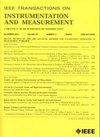基于纳秒脉冲激光激励的新型椭圆偏振检测方法的空间电荷测量验证与评价
IF 5.6
2区 工程技术
Q1 ENGINEERING, ELECTRICAL & ELECTRONIC
IEEE Transactions on Instrumentation and Measurement
Pub Date : 2025-06-26
DOI:10.1109/TIM.2025.3582305
引用次数: 0
摘要
空间电荷测量与评价可以对绝缘材料的介电性能进行分析,而现有的测量方法不能实现非接触方法的电荷测量,且不能用于复杂的瞬态电压条件。以往的研究已经实现了利用光学椭偏检测在脉冲电压激励下的电荷测量,但尚未实现基于全光和非接触模式的电荷测量。本文采用高功率脉冲激光和椭偏技术,设计了一种光激发和检测方法下的空间电荷测量系统。通过实验优化激发和检测模块,进一步验证了这种全光电荷测量方法的可行性。首先,对激励模块的压力波激励参数进行了实验评估,结果表明,当激光能量为340 mJ,目标电极材料为喷铝石墨烯时,系统的信噪比可提高到38.02 dB。然后,基于建立的椭偏探测系统透射模型,对影响测量灵敏度的主要参数进行了评估。进一步的参数优化实验表明,该系统在He-Ne激光入射角为60°时,使用厚度为10.2~\mu $ m的弹性光学传感器具有良好的测量灵敏度。最后,基于优化后的系统,对不同电压条件下的kapton型聚酰亚胺样品进行了测试。与传统脉冲电声(PEA)方法的比较结果表明,该方法可以实现基于全光模块的空间分辨率为$14~\mu $ m的非接触式空间电荷测量。本文章由计算机程序翻译,如有差异,请以英文原文为准。
Space Charge Measurement Validation and Evaluation of a Novel Ellipsometry Detection Method Based on Nanosecond Pulse Laser Excitation
The space charge measurement and evaluation can provide a dielectric performance analysis for the insulating materials, while the existing measurement methods cannot realize the charge measurement by the noncontact methods and be used in complex transient electrical voltage conditions. The charge measurement under pulsed voltage excitation with optical ellipsometry detection has been realized in previous studies, while they haven’t achieved the charge measurement based on all-optical and noncontact modes. This article designs a novel space charge measurement system under optical excitation and detection methods by introducing high-power pulse laser and ellipsometry techniques. The feasibility of this all-optical method in charge measurement is further verified by experimentally optimizing the excitation and detection modules. First, the pressure wave excitation parameters at the excitation module are evaluated experimentally, which indicates that the signal-to-noise ratio of the system can be improved to 38.02 dB at the laser energy of 340 mJ and the target electrode material of aluminum-sprayed graphene. Then, the main parameters affecting the measurement sensitivity are evaluated based on the established transmission model of the ellipsometry detection system. The further parameter optimization experiments show that the system has good measurement sensitivity at He–Ne laser incidence angle of 60° with a $10.2~\mu $ m thickness elastooptical sensor. Finally, Kapton-type polyimide samples are tested under different voltage conditions based on the optimized system. The compared results with the traditional pulsed electro-acoustic (PEA) method show that the proposed method can achieve noncontact space charge measurement with a spatial resolution of $14~\mu $ m based on all-optical modules.
求助全文
通过发布文献求助,成功后即可免费获取论文全文。
去求助
来源期刊

IEEE Transactions on Instrumentation and Measurement
工程技术-工程:电子与电气
CiteScore
9.00
自引率
23.20%
发文量
1294
审稿时长
3.9 months
期刊介绍:
Papers are sought that address innovative solutions to the development and use of electrical and electronic instruments and equipment to measure, monitor and/or record physical phenomena for the purpose of advancing measurement science, methods, functionality and applications. The scope of these papers may encompass: (1) theory, methodology, and practice of measurement; (2) design, development and evaluation of instrumentation and measurement systems and components used in generating, acquiring, conditioning and processing signals; (3) analysis, representation, display, and preservation of the information obtained from a set of measurements; and (4) scientific and technical support to establishment and maintenance of technical standards in the field of Instrumentation and Measurement.
 求助内容:
求助内容: 应助结果提醒方式:
应助结果提醒方式:


